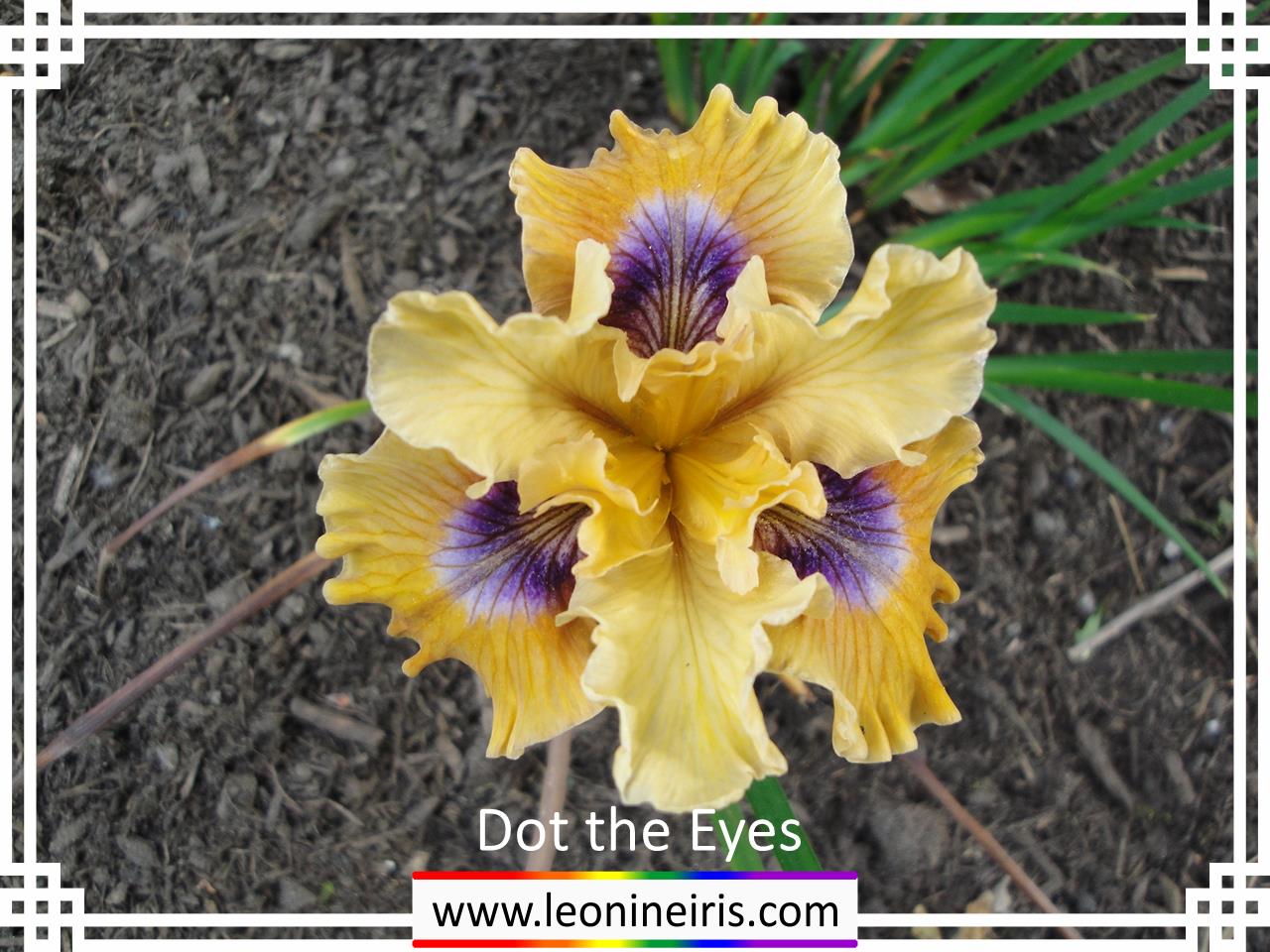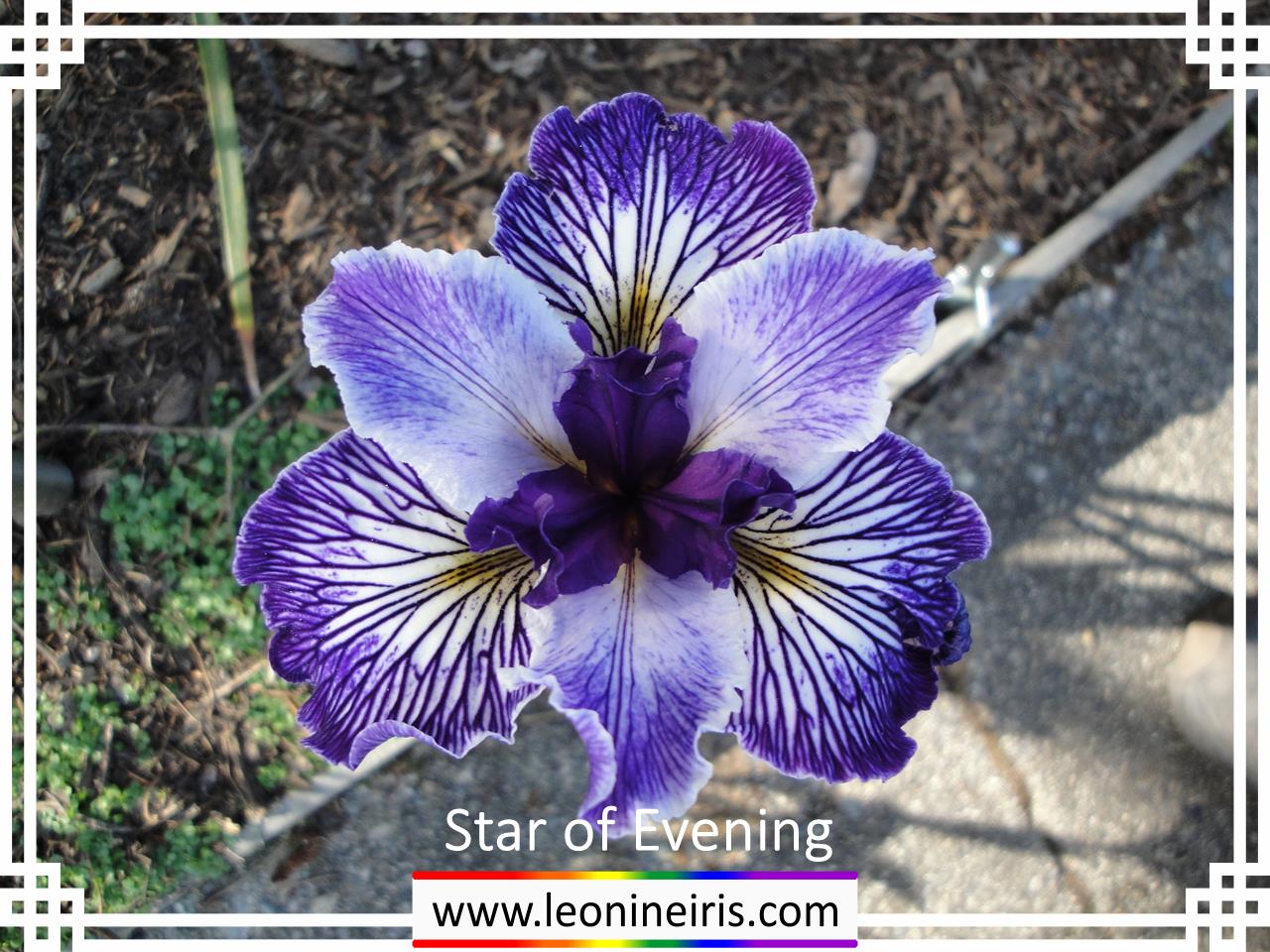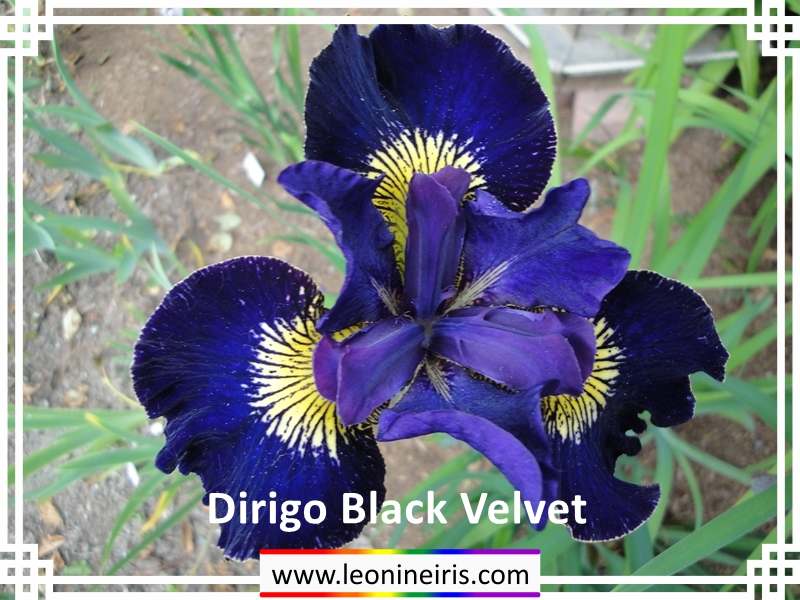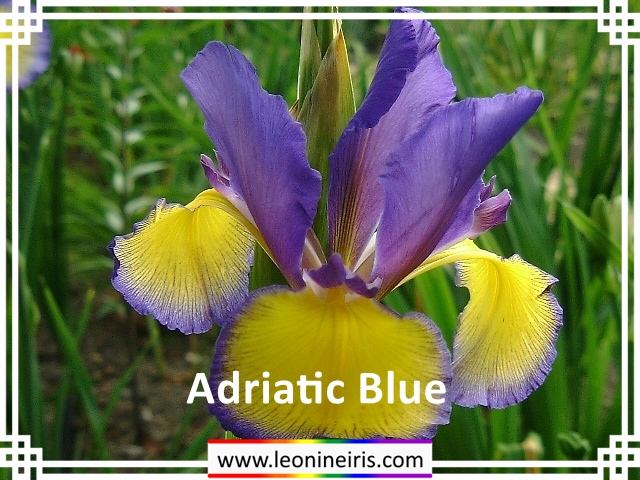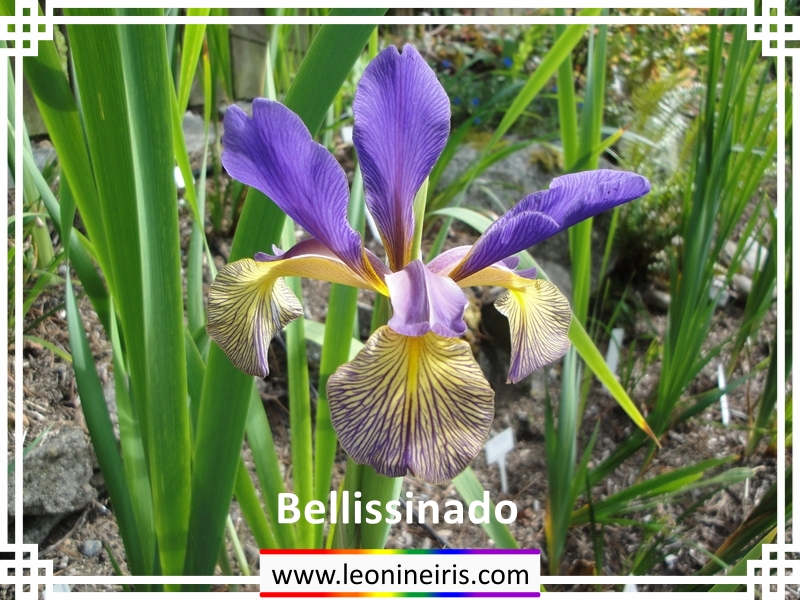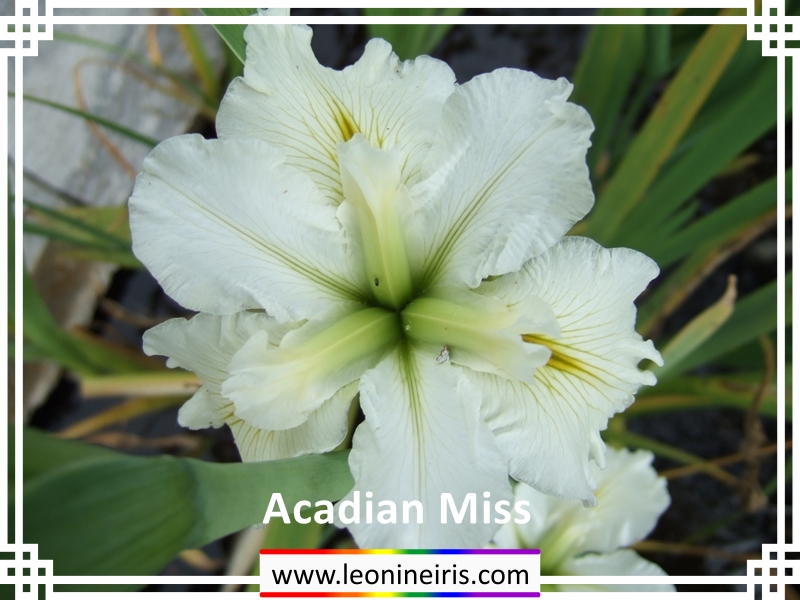- Home
- Rhizome Sales
- Pacific Coast Iris
-
Other Iris
- Bearded Iris
- Classifications Bearded Culture Dividing Bearded Iris
- Species/Bulb Iris
- Species Culture Bulbous Culture
-
Articles
- Information
- Diseases and Pests AIS Registrations USA Zone Map
- Iris in the Landscape
- Iris in the Landscape Iris in Containers Iris for all Seasons Companion Plants
- Pondering...
-
Galleria
- Pacific Coast Iris
- Leonine Iris Introductions Leonine Iris Seedlings Pacific Coast Iris
- Beardless Iris
- Siberian Iris Japanese Iris Spuria Louisiana Iris Cal-Sib SinoSib
-
IrisBytes
- IrisBytes
- About IrisBytes
- Fun With Iris
- Digital Iris Jigsaws Iris Word Search
- Iris Graphics
- Iris Screen Savers Iris Seamless Tiles 1 Iris Seamless Tiles 2 Iris Desktop Wallpapers
-
LeonineBytes
- LeonineBytes
- About LeonineBytes
- PC Screensavers
- Holiday Screensavers Assorted Screensavers
- PC Personalization
- Holiday Seamless Tiles Christmas Seamless Tiles 1 Christmas Seamless Tiles 2
- Contact
Beardless Iris Culture
Pacific Coast Native (PCN/PCI) or Californica (CA) Iris can be a challenge to grow, but are well worth the effort. During their first year in the garden, they need a bit of extra TLC and coddling, and they may not show a lot of spirited growth. However, once established these irises tend to be quite hardy and fairly drought tolerant making them an excellent option for use in naturalized landscapes. They are sometimes used on slopes for soil retention. Here in the mild climate along the Pacific Coast where minimum temperatures rarely drop below 10° F or rise above 90° F, they can be planted in full to part sun. In areas outside of Zone 8 conditions, partial shade may be best; winter protection may also be required.
Planting Instructions: After receiving your shipment of PCI in September from Leonine Iris, planting your new rhizomes immediately is highly recommended as it will greatly increase survival rate. If you cannot plant your new rhizomes immediately, be sure to at least loosen the rubber band around the plastic bag and keep the packing material moist but not wet. Do not let water sit in the plastic bag! Do keep the rhizomes in a cool shady area until you are ready to plant. All rhizomes have been soaked in a vitamin B1 solution to help promote initial root growth; an additional application of Vitamin B1 at the time of planting will further encourage strong root development.
Prepare a neutral to slightly acidic, well drained, yet moist, soil bed. Ideally, the soil needs to be firmly packed down yet crumbly for ease of cultivation and good air circulation. Gently unwrap the rhizome; keep in mind that roots may have started to grow through the wrapping. Place your rhizomes ¾” to 1” below the surface of the ground with the roots well spread out underneath the rhizome. Be sure to firm the soil lightly around each rhizome when planting. Note: If white roots are not plainly visible at the base of the rhizome fan when you receive it, soak the base of the fan in water for 12-24 hours before planting. Transplants must be kept well watered until natural rainfall can maintain high moisture. In areas subject to frosts or freezing weather, consider mulching with fine bark dust, pine needles or leaves. Should frost damage occur, growth may not be noticeable until well into spring.
Note: Do not expect bloom the first year. If your newly planted iris sends up a flower stalk its first season you may want to consider removing it, to allow the division to become well established without taxing its strength. Bloom places a heavy strain on the plant and may cause poor performance the first year.
Spacing: Generally, PCIs are planted from 16” to 24” apart.
Care: Keep weeds and grass tufts out of the rhizome clumps. Cultivate shallowly, since the feeder roots are near the surface. Newly-set plants should be kept moist until the roots are growing well. Established plants rarely need watering except during prolonged dry spells; at such times, deep, infrequent watering is best. Watering during the heat of the day is not recommended.
Transplanting: The general rule of thumb is to wait until the fall rains start as this seems to initiate the new roots that are used to indicate that it's time to transplant. While PCIs are relatively drought tolerant, we still water about once a week to maintain the rest of our plant collection. This practice has proven to effectively initiate new white roots in mid-August, well before the fall rains begin. Because of this, we have found that the best time for transplanting is mid-August to the end of September. As long the transplants are kept evenly moist until regular rains start, the transplants will be much better established before the cold weather sets in.
Because these irises tend to be persnickety, we recommend that divisions be taken from the mother plant by gently pulling small groups of fans away at the base of the plant (never more than half the mother plant), and then planted in their new home. By leaving the mother plant somewhat undisturbed, you have a back-up in case the transplants fail to get established.
strong>Fertilizer: Apply as a side dressing in early spring and then again after bloom. It can burn rhizomes, so apply it around, but not on, the plant. Too much nitrogen may promote weak, lush growth which is susceptible to disease, so a 10-20-20 or similar formula is best. In areas where soil tends to be alkaline, a rhododendron or camellia fertilizer may be an option. We have had good results using extended-release fertilizers.
Maintenance: Air circulation and sanitation can reduce or eliminate problems. Old bloom stalks should be cut off at ground level; some varieties will drop viable seed and most likely will not reproduce your hybrid. Healthy, green foliage should NOT be cut off. Foliage needs to be left on the plant to foster development of new sprouts for the next season. After the fall rains have started, carefully remove old iris leaves and other debris from around the base of the plant, and then mulch if desired. Slugs love to nibble at new shoots and will devour flower buds, so slug control is highly recommended.
For additional information, please visit the Society for Pacific Coast Iris website! (www.pacificcoastiris.org/)
Japanese Irises (JI) present some of the most spectacular flowers of all the irises. Blooms are usually huge; they can be ruffled or flared, flat or pendant in form; some are marbled with gray or white. Japanese hybridizers have worked with them for over 500 years. These irises bloom about a month after the Tall Bearded irises. They prefer full sun and ordinary garden conditions, but require a moist and slightly acid soil, especially up to bloom time. They will do very well beside a stream or a pond but in cold climates they do not like to have their roots in water during the winter. Japanese Iris prefer a heavy, rich soil with ample organic matter. The soil pH should be slightly acid, ideally between 5.0 to 6.5. They do not like lime, so do not plant close to cement, as lime leaches out of it.
Plant strong divisions of 2-3 fans. The roots should never dry out during transplanting. Plant the rhizome 1-2 inches deep, preferably in a 3-4 inch depression, which will catch and hold moisture. Since new roots form above the old ones, soil may be gradually added to fill in the depression over 3 years or so, to maintain plant vigor for a longer period of time. Keep divisions well watered after planting, until established. Japanese iris are heavy feeders. A liberal application of a balanced fertilizer, such as 12-12-12, in the early spring and just after bloom is helpful.
Transplanting may be done from spring until fall but shortly after bloom time is best. This gives the new roots time to anchor the plant before winter freezes. A heavy 2-3 in. mulch is beneficial to conserve moisture and reduce weeds. If plants are set out in fall, mulch heavily before the winter.
For more detailed information, please visit the Society for Japanese Iris website! (www.socji.org)
Siberian Iris (SIB) are a hardy beardless iris growing from 2-4 ft. in height. They bloom at the end of the Tall Bearded season. They are very effective in naturalized settings and perennial borders. Siberians need 2-3 years to become fully established; the first year's bloom is not representative.
Planting Preparation: Siberians perform well in most garden soils, but do best if you provide a rich, mildly acidic soil containing liberal amounts of organic material. Full sun will encourage compact plants and strong bloom; at least 6 hours is the minimum. Adding a balanced fertilizer such as 10-10-10 or 16-16-16 to the bed prior to planting is recommended. Even moisture through the summer will promote strong plants. An organic mulch will help maintain cooler soil temperatures and even moisture. Siberian irises perform well in mixed perennial beds.
Planting Instructions: Plant the rhizomes about 1" under the ground. Firm the soil around the rhizomes and water well. First year plantings will benefit from mulch the winter.
Maintenance: Siberian irises benefit from a dose of balanced fertilizer in the early spring, and then again after they bloom; some grower report having good results using Miracid as a foliar feeding. Even watering throughout the summer is recommended for best growth; organic mulch helps maintain even moisture. Once bloom has completed, remove the spent blooms and stalks. Do NOT trim the foliage since the foliage of a healthy plant will stay attractive until late Fall when plant begins to go dormant. Once dormancy begins the foliage can be trim down close to the ground. The remaining foliage can be removed after the first freeze causes full dormancy. Siberians are quite disease resistant. Normal garden disease prevention should be adequate.
Dividing/Transplanting: Clumps of Siberians can be left undisturbed for several years. One of the obvious indications that it is time to divide the clump is smaller blooms and declining vigor of the plant. Another indicator is the development of an open gap in the center of the clump. We recommend digging the clump in late August through the end of September and retaining about a 4" pot size for replanting. Do not let it dry out! Prepare the soil as above, replant your division and keep it moist until natural rainfall begins. Transplanting may be done in Spring, but bloom will be limited if not entirely eliminated.
For more detailed information, please visit the Society for Siberian Iris website! (siberianirises.org)
Spuria Irises (SPU) grow 2' to 5' tall and display open, delicate blooms on top of tall, rugged plants about 1-2 weeks after the Tall Beardeds. Spurias grow well in all types of garden soil, preferring neutral to slightly alkaline soils. Full sun and sharp drainage are imperative, as is consistant fertizing since they are heavy feeders. They do not like wet feet.
Spurias are unusual in that their new growth actually breaks ground in the Fall once natural rain patterns begin. Growth continues until bloom; be sure to provide fertilizer in the Spring! Once the bloom is complete, you have a choice to make. Continuing with regular watering will prevent summer dormancy; the plants will retain their foliage, but bloom may not be as strong the next year. Or allow the plants to enter their summer dormancy; the plants will gradually die down, looking rather bedraggled until the foliage can be removed, but bloom will be strong the next year. Either way, Spurias are best used as background plants in mixed perennial beds.
When planting, cover the rhizomes with 2 inches of soil. Space plants at least 2 feet apart. After planting, water in well and water regularly until plants are established. In future years, the plants need water before bloom, but there is no need to water after blooming, although doing so won't hurt them. An application of composted manure or commercial fertilizer will enhance growth. Do not expect peak performance until the second or third year. Spurias should be left alone for years, allowing the plants to grow into the large clumps for which they are noted.
For more detailed information, please visit the Spuria Iris Society website! (spuriairissociety.org)
Louisiana Iris (LA) bloom after Tall Bearded but before Japanese iris. They are at home in a wide variety of soil types, but prefer acid soil and boggy areas with at least half a day of sun. They can be grown in regular perennial beds, with additional water during the growing season. Under ideal growing conditions Louisiana irises are robust growers.
Transplant Louisiana's from August to September to allow growth to be established before winter. Plants should be spaced at least 2 ft. apart, with the growing tip facing in the direction you want them to grow. Plant rhizomes horizontally with about 2 in. of soil covering them and water until established. If planted in a triangle, they can be left in place 2-3 years without becoming overcrowded. Ample quantities of organic matter (peat, compost or manure) along with a balanced fertilizer help these heavy feeders. A foliar feeding every 10 days, plus ample water, is helpful in short season areas like Seattle, to get vigorous, uninterrupted growth during the entire season. Mulch heavily before cold weather sets in.
For more detailed information, please visit the Society for Louisiana Iris website! (www.louisianas.org)
Sino-Siberian Irises (SinoSib, 40s) have 40 chromosomes, thus the "40s" nickname. The Sino-Siberian subseries includes I. bulleyana, I. chrysographes, I. clarkei, I. delavayi, I. dykesii, I. forestii, I.phragmitetorum, and I. wilsonii, providing a wide range of colors and patterns not seen in Siberian irises. Heights range from 14" to 48". The bloom season tends to be after or toward the end of Siberian bloom. Blooms can be heavily scented and are considered desirable by hummingbirds. Though foliage and flower form are similar to the Siberian, the cultural needs are quite different as they all prefer a consistently moist, rich soil that is neutral to acidic. (Alkaline soil can be deadly.) Full sun is preferred. A dose of high nitrogen fertilizer after bloom is recommended for optimal growth. Winter cold is needed for strong bloom, so planting away from protected areas will help promote bloom. SinoSibs are relatively free of diseases and pests, however they are susceptible to phytopthera, a soil-borne water mold that causes crown rot so application of a good fungicide may be necessary.
Cal-Sib irises are the products of crosses between two iris species, Pacific Coast (Californicae) and Sino-Siberian. The Pacific Coast iris grows within a very limited range in the northwestern U.S. (west of the Cascade Mountains). Crosses with Sino-Siberian iris were made to capture the beauty of the PCI flower on a plant that can grow in a broader range.
Cal-Sib irises are generally shorter than garden Siberian iris, but taller than PCIs. The foliage is semi-evergreen, and flowers are 2-3” in diameter. They grow best when planted in rich, well-drained soil under sun or part shade. Since they are a species cross, these plants are sterile (although you never know what Nature will do...)
